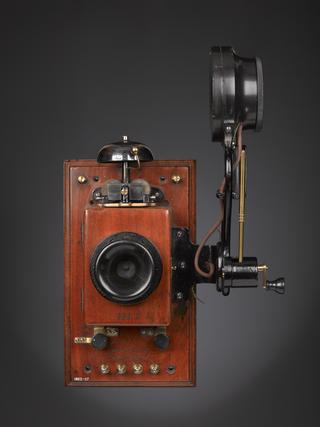
Standard Morse key, 1880-1950
- Made:
- 1880-1950 in United Kingdom
- supplier:
- General Post Office




Standard Morse key 1222, made for the General Post Office, unknown maker, British, 1880-1950.
Morse keys were used to send telegraph messages using Morse code. It worked using a bar with a contact underneath. When the bar was depressed, the circuit was completed, and the current could flow. This type of Morse key was used by Post Office telegraph operators in Britain for many years. The rapid and repetitive action of sending messages via Morse code sometimes led to a condition called 'glass arm' or 'Telegrapher's paralysis', which we would know today as repetitive strain injury.
Details
- Category:
- Telecommunications
- Object Number:
- 1970-358
- Materials:
- copper (alloy), wood (unidentified), plastic (unidentified) and iron
- Measurements:
-
overall: 70 mm x 80 mm x 155 mm, .56 kg
- type:
- telegraph
- credit:
- Donated by the Great Northern Telegraph Company Limited of Denmark




